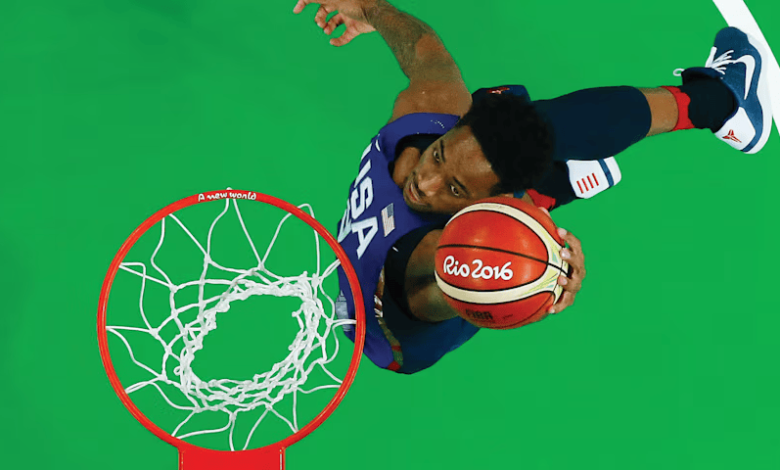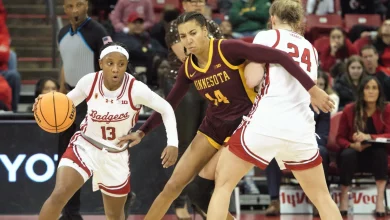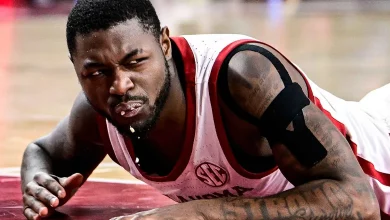Basketball rules: all you need to know, including how to play and score

Basketball is one of the most popular and widely played sports in the world, attracting millions of fans and participants alike. The game is fast-paced, filled with excitement, and offers opportunities for athletes to showcase their skills, from shooting and passing to dribbling and defending. Whether you are new to the sport or someone looking to deepen your understanding, this guide will provide an overview of the essential rules of basketball, how to play the game, and how scoring works.
1. The Objective of the Game
The primary objective in basketball is simple: score more points than your opponent by getting the basketball into their hoop. A game is typically played between two teams of five players each. The team with the most points at the end of the game wins.
2. The Court and Equipment
A standard basketball court is rectangular in shape, measuring 94 feet (28.65 meters) long and 50 feet (15.24 meters) wide. The court is divided into two main sections by the center line. At both ends of the court are basketball hoops—a netted ring positioned 10 feet (3.05 meters) above the ground, and a backboard behind it to help guide the ball.
- The Key/Free-Throw Line: A rectangular area beneath the basket, also known as the “paint,” where much of the action occurs. The free-throw line is located 15 feet (4.57 meters) from the basket.
- The Three-Point Line: This curved line is drawn at a distance of 22 feet (6.7 meters) from the basket in most courts. Shots made from beyond this line are worth three points.
- The Sidelines and Baselines: The boundary lines that mark the perimeter of the court.
3. The Game Structure
A typical basketball game is broken into four quarters, each lasting 12 minutes in the NBA (the time may vary in other leagues or levels of play). If the score is tied at the end of regulation time, overtime periods are played until a winner is determined. Each team is allowed a set number of timeouts to rest and strategize during the game.
4. Team Composition
Each basketball team consists of five players on the court at a time. These players are usually assigned positions, although many players are versatile and can play multiple roles. The main positions are:
- Point Guard (PG): Often considered the leader on the court, the point guard is responsible for directing the team’s offense, distributing the ball, and running plays.
- Shooting Guard (SG): Typically the best shooter on the team, the shooting guard is responsible for scoring points and often plays off the ball.
- Small Forward (SF): A versatile position that requires a player to be able to score, pass, and defend. Small forwards are often good all-around players.
- Power Forward (PF): Often larger and stronger, power forwards are typically responsible for rebounding, defending in the paint, and scoring near the basket.
- Center (C): Usually the tallest player on the team, the center is tasked with protecting the rim, grabbing rebounds, and scoring inside.
5. How the Game Starts
The game begins with a jump ball at center court. The referee tosses the ball into the air, and one player from each team jumps to try to grab it. The player who successfully gains possession of the ball passes it to a teammate to begin the game. In subsequent possessions, the team that gains possession of the ball is referred to as the “offensive” team, while the opposing team is the “defensive” team.
6. Scoring in Basketball
Scoring is one of the most fundamental aspects of basketball. Here is how points are awarded:
- Field Goals: A basket made from inside the three-point line is worth two points. If a player makes a basket from beyond the three-point line, the shot is worth three points.
- Free Throws: When a player is fouled while attempting a shot, they are awarded free throws. Each free throw is worth one point. A player can receive between one and three free throws depending on the type of foul committed.
- A Three-Point Play: If a player is fouled while making a three-point attempt and successfully makes the shot, they are awarded the three points for the basket and one additional free throw attempt.
7. The Shot Clock
In professional basketball (like the NBA), teams are given a 24-second shot clock to attempt a shot. This means that once a team gains possession of the ball, they must attempt a shot within 24 seconds. If they fail to do so, it results in a shot clock violation, and the other team is given possession.
8. Dribbling and Passing
- Dribbling: Players are not allowed to walk or run while holding the ball. To move around the court, they must dribble the ball—bouncing it on the floor repeatedly with one hand. Players cannot double-dribble, meaning they cannot stop dribbling and then start again, unless they pass the ball to a teammate.
- Passing: Players use various types of passes to move the ball around, including chest passes, bounce passes, and overhead passes. The goal is to move the ball efficiently to create opportunities for scoring.
9. Defense and Fouls
The defensive team’s job is to prevent the offensive team from scoring by blocking shots, stealing the ball, and forcing turnovers. Defenders can use a variety of techniques, including:
- Blocking: A defensive player may block an opponent’s shot, sending the ball away from the basket.
- Stealing: A defender may steal the ball by legally taking it from an offensive player.
- Guarding: Defenders must stay in front of the offensive player they are guarding, preventing them from taking uncontested shots.
A foul is committed when a player makes illegal physical contact with an opponent. Fouls can happen in many ways, such as:
- Personal Foul: This occurs when a player makes illegal physical contact with an opponent (e.g., pushing, hitting, or holding).
- Shooting Foul: If a defensive player fouls an offensive player while they are in the process of shooting, the offensive player is awarded free throws.
- Technical Foul: A technical foul can be called for unsportsmanlike conduct or other violations such as arguing with the referees.
10. Violations
Basketball has several rules violations that result in turnovers or changes in possession:
- Traveling: A player must dribble the ball while moving. If they take more than two steps without dribbling, it is considered traveling.
- Double Dribble: If a player dribbles the ball, stops, and then starts dribbling again, it is called a double dribble.
- Out of Bounds: If the ball or a player steps out of bounds, the opposing team gains possession of the ball.
- Carrying the Ball: If a player holds the ball in their hand without dribbling it, and then continues to move, this is called carrying or palming the ball.
11. Timeout and Substitutions
Each team is allowed to call a limited number of timeouts during the game. Timeouts allow the coach to discuss strategy and make adjustments. During these timeouts, players rest, hydrate, and refocus. Substitutions are made during stoppages in play, allowing fresh players to enter the game.









